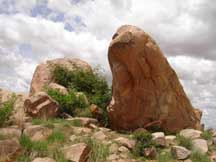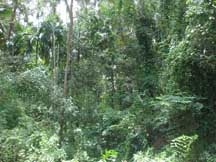Breathing is a natural but essential phenomenon in animals designed to supply a fresh dose of oxygen to the body and the mind and at the same time, remove the carbon dioxide accumulated inside the body. However, it is such a simple process that in the course of our routine life, with its usual dosage of ups and downs, we often tend to take the importance of this natural process for granted.
Breathing is absolutely an art and it should not only be cultivated properly and practiced regularly but also be remembered again and again when we tend to disregard or forget it.
Pranayama is a systematic approach to the process of breathing. The oxygen we intake with breathing in is credited with the title of praaNa, the life. Thus, it defines and explains the importance of breathing in a nutshell.
The art of breathing is divided into two parts: Uchvasa, the breathing in and Nishvasa, the breathing out. The pranayama regulates you to breathe in slowly and steadily till your lungs are filled with the fresh air. You are supposed to keep that inhaled quantity of fresh air for some comfortable duration of time. This ensures that the fresh air you sucked in is distributed to various parts of your body including the brain; and simultaneously all the stale air (carbon dioxide) is collected back to the lungs. And then, when you slowly breathe out, the accumulated carbon dioxide is released to the outer world, the atmosphere. The breathing exercise is repeated for several cycles of inhaling and exhaling.
Thus, the art of pranayama is a systematized method to regulate distribution of (oxygen rich) fresh air to various parts of the body and at the same time extricate (carbon dioxide rich) stale air out of the body. The supply of fresh air to the body and mind ensures a fresh lease of energy that invigorates your actions. Similarly, the removal of stale air from the body increases your comfort levels and soothes your reactions.The art of breathing simply changes the way you live and react to the world.
Well, there is nothing new, we all know it, you may say! Yes. It is true that we all, or at least most of us, know about the pranayama, thanks to the teachings of various Swamis and Rishis in our society from time to time.
But, the fact is that the art of breathing is such a simple unassuming natural exercise that we tend to disregard it with passage of time and preoccupation with our joys or miseries. We neglect the art leading to lack of energy, motivation or direction and above all poor status of physical and mental health.
Therefore the message is reactivate yourself if you are down in energy, proper spirits or health. Remember the ancient art of breathing and start practicing it.
And if you had taken quite a long break from the art of breathing, start with cleaning your internal system: begin with exhaling the stale air accumulated in your body and mind. Then continue with systematic breathing in and out comfortably. See the physiological and psychological changes for yourself.






